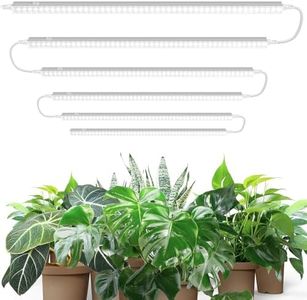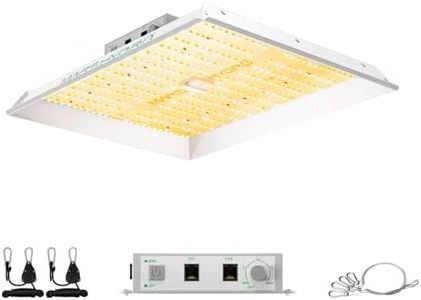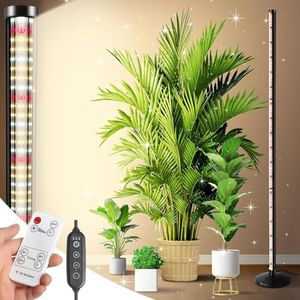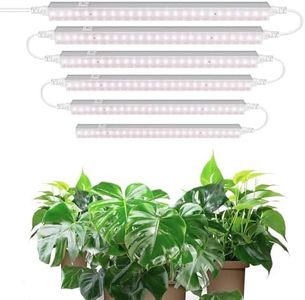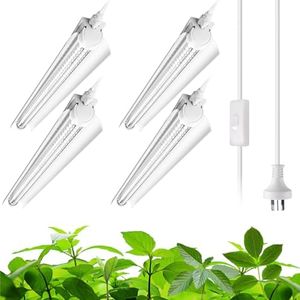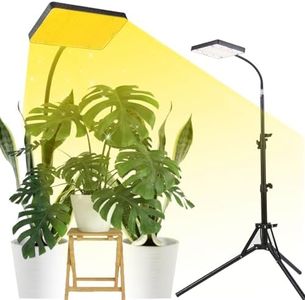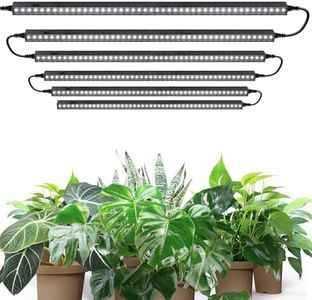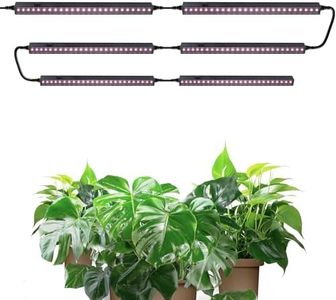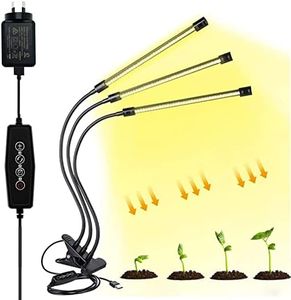We Use CookiesWe use cookies to enhance the security, performance,
functionality and for analytical and promotional activities. By continuing to browse this site you
are agreeing to our privacy policy
10 Best Grow Lights
From leading brands and best sellers available on the web.Buying Guide for the Best Grow Lights
Choosing the right grow lights is essential for successful indoor gardening or plant cultivation. The ideal grow light can help plants thrive by providing the necessary light spectrum and intensity they lack indoors. When making your choice, assessing your plant types, growing space, and how long you plan to have the lights on each day will help you narrow down the best option for your needs.Light SpectrumThe light spectrum describes the range of light wavelengths a grow light produces. Plants need different parts of the spectrum for different growth stages—blue light for leafy growth and red light for flowering and fruiting. Full-spectrum lights cover all bases and are great for general use. If you're growing from seed to harvest, full-spectrum is usually the safest bet, but if you're only looking to boost growth or flowering, you might look for lights that emphasize blue or red wavelengths.
Light Intensity (measured in lumens or PPFD)Light intensity tells you how much light your plants will actually receive. Seedlings and shade-loving plants often need lower intensities, while fruiting and flowering plants benefit from higher values. Light measured in lumens works for general brightness, but PPFD (photosynthetic photon flux density) is more plant-specific. Higher intensity is good if you have demanding plants or a large growing area, while lower may suffice for a few houseplants.
Coverage AreaCoverage area is how much space the grow light effectively illuminates. You need to match your grow light to the size of your garden or plant setup. Small desk lamps work for single pots, while larger panels are necessary for trays or bigger patches. Consider not just the footprint, but also the intensity drop-off at the edges, as some lights are brightest in the center.
Type of Light (LED, Fluorescent, HID, etc.)Different types of grow lights have their own strengths and weaknesses. LED lights are energy-efficient, long-lasting, and run cool, making them popular for most growers. Fluorescent lights are good for seedlings and leafy greens, while HID lights (like HPS or MH) offer high intensity for bigger set-ups but run hotter. Choose based on energy use, duration of use, heat constraints, and space.
Heat OutputHeat output refers to how much warmth the grow light emits. Some plants appreciate a bit of extra warmth, but too much heat can harm tender plants and make environmental control harder. LEDs tend to stay cooler, while HID lights run hot. Always consider whether your growing setup can deal with extra heat or if you’ll need fans or ventilation.
Adjustability (Height, Spectrum, Timer)Adjustability is about how much control you have over the light’s position, spectrum, or operating hours. Being able to raise or lower your light helps accommodate growing plants, while some modern grow lights let you adjust the spectrum or set automatic timers. If you like a 'set it and forget it' approach or want to optimize for different plant stages, more adjustment options are helpful.
